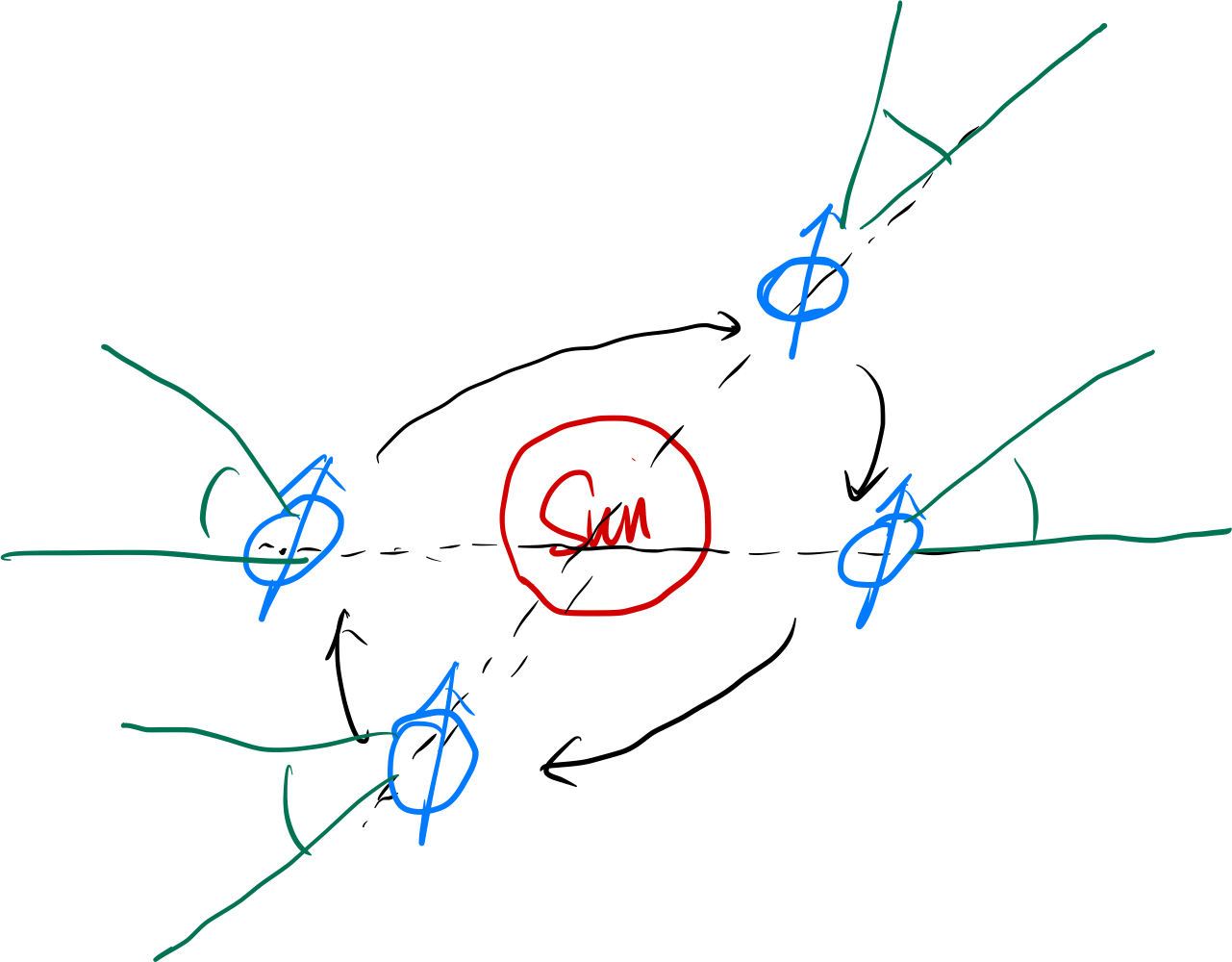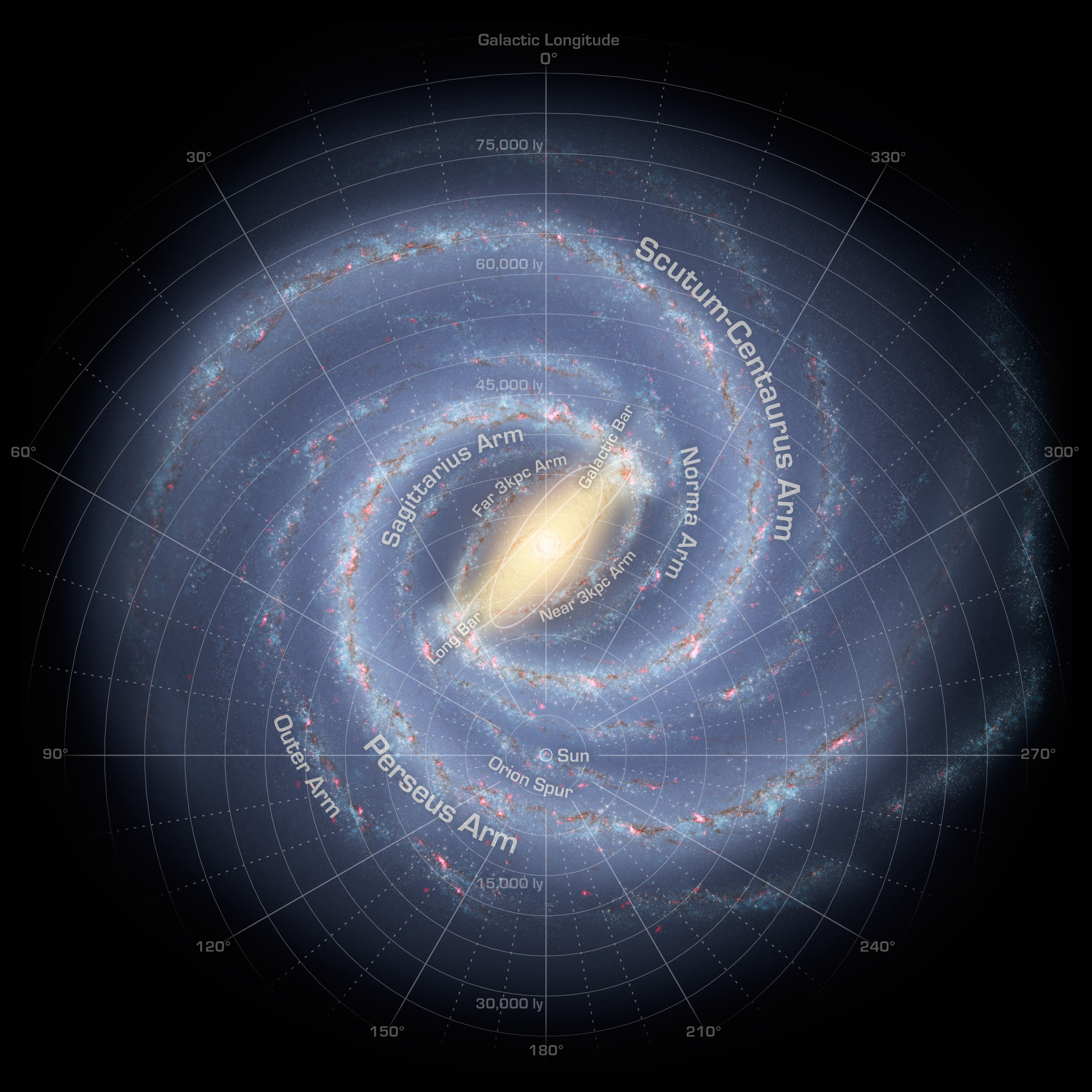1. Intro
Why: understand the universe we live, our existence, nature of the cosmos
- How universe works
- Origin of everything
- Exploring possibilities of life
Major problem
- Dark matter, dark energy
- The scale of universe
- Complex data and interpretation
1.1. Phase 1: Foundation of Astronomy
- Introduction to Astronomy
- Content: Overview of astronomy, its history, and significance.
- Purpose: To set the stage for what astronomy entails and its role in understanding the universe.
- Understanding the Night Sky
- Content: Basics of observing the sky, constellations, motions of celestial objects.
- Purpose: Observational skills are crucial in astronomy. This forms the basis for all astronomical observations.
- Solar System
- Content: Detailed study of our solar system, including planets, moons, asteroids, and comets.
- Purpose: Provides an understanding of celestial bodies closest to us, essential for grasping more complex concepts later.
- Stellar Astronomy
- Content: Life cycles of stars, nuclear fusion, star types and properties.
- Purpose: Stars are fundamental units of the universe. Understanding them is key to grasping larger structures and processes.
- Tools of Astronomy
- Content: Telescopes, detectors, and observational techniques.
- Purpose: Familiarizes learners with how astronomical data is collected and analyzed, crucial for understanding modern astronomy.
1.2. Phase 2: Intermediate Concepts
- Galactic Astronomy
- Content: Structure and dynamics of galaxies, including the Milky Way.
- Purpose: Builds upon stellar astronomy to explore larger structures, helping to understand the universe’s organization.
- Cosmology
- Content: Large scale structure of the universe, Big Bang theory, expansion of the universe.
- Purpose: Addresses the origin, evolution, and eventual fate of the universe, providing context for all astronomical phenomena.
- Exoplanetary Science
- Content: Study of planets outside our solar system, methods of detection.
- Purpose: An emerging and rapidly evolving field, reflecting current research trends and broadening the understanding of planetary systems.
1.3. Phase 3: Advanced Topics
- Astrophysics
- Content: Advanced concepts in physics as applied to astronomical phenomena.
- Purpose: To bridge the gap between physics and astronomy, crucial for understanding complex processes and interpreting observational data.
- High-Energy Astrophysics
- Content: Study of phenomena involving high-energy radiation, like quasars, black holes, and supernovae.
- Purpose: Focuses on some of the most energetic and dynamic processes in the universe.
- Observational and Experimental Techniques
- Content: Advanced techniques in data acquisition and analysis, including spectroscopy and radio astronomy.
- Purpose: To provide hands-on skills in modern observational methods, essential for a practical understanding of the field.
1.4. Phase 4: Specialization and Current Research
- Special Topics in Astronomy
- Content: Courses or modules on specific areas like dark matter, astrobiology, or gravitational waves, based on current research trends.
- Purpose: Allows for specialization in areas of personal interest and engagement with cutting-edge research topics.
- Research Methodology in Astronomy
- Content: Methods of scientific research, data analysis, and interpretation specific to astronomical research.
- Purpose: Prepares for potential research work or further academic pursuits in astronomy.
- Seminar on Contemporary Issues
- Content: Discussions on current challenges and discoveries in astronomy.
- Purpose: Keeps up to date with the evolving nature of the field and encourages critical thinking about contemporary issues.
2. Real Intro
Def: study of celestial bodies such as stars, planets, comets, galaxies, and phenomena occur outside Earth’s atmosphere
History
- Ancient: used astronomy for calendrical purpose, navigation, understand place in the universe
- Scientific revolution:transformed to one based on physics and mathematics
- Modern: thanks to telescopic tech and space exploration, expanded rapidly, uncovering profound insights
Branches
- Observational: gathering and analyzing data
- Theoretical: developing model to explain observation
- Astrophysics: apply physics and chemistry to explain
- Planetary science
- Cosmology
Tools
- Telescopes
- Space probes and satellites
- Computational tools
3. Night Sky
Constellation: patterns or groups of stars have been traditionally named and used for storytelling and navigation
- How different cultures interpreted constellation
Seasonal changes: night sky changes with seasons

Planets and star: planets don’t twinkle like stars, understand the motion in solar system
- Planets bigger in sky, since closer
- Star twinkles since the atmospheric turbulence
Planets
- Inner planets: Mercury, Venus, Earth, Mars
- Rocky, dense, few moons
- Outer planets: Jupiter, Saturn, Uranus, Neptune
- Larger, thicker atmospheres, many moon
Moon
- Natural satellite, phase, surface feature
- Moon of other planets
- Jupiter: Ganymede
- Saturn: Titan
Comets: Ice rich bodies from outer parts of the solar system
- solar radiation causes comets to form tails pointing away from the Sun.
Space mission
- Voyager 旅行者 Status
- 1,2, launched in 1997, designed to take advantage of a rare alignment of the outer planets for a grand tour
- Achievement: first detailed images and scientific observation
- New Horizons
- Launched in 2006, first mission to Pluto and Kuiper Belt
- Provide first close-up images in 2015
- Mars Rovers: Spirt, Opportunity, Curiosity, Perseverance
- Exploring the Martian Surface
4. Stellar 恒星
4.1. Formation
Nebular theory:
- Stars form from collapsing clouds of gas and dust
- Cloud collapses under gravity (collapse generate heat)
- Heat up and eventually forms a protostar
4.2. Main Sequence
Nuclear fusion 核聚变
- Core of a star reach temperature and pressure
- Nuclear fusion begin converting hydrogen into helium
- Release tremendous amount of energy
- Counteracting the gravitational collapse and stabilize
Most of the time would stabilize in this stage, time depends on its mass
4.3. Star Type
How to classification? Based on spectral characteristics and brightness

4.4. End
After exhausting hydrogen fuel, star expand and cool
- Low and medium mass: white dwarf, cool and fades away
- Massive mass: neutron star or black hole
4.5. Nuclear Fusion
Element formation: Stars can format element up to Fe in there lifecycle
Supernovae: Element heavier than iron are formed during supernova explosions
4.6. Phenomena
Stellar Flare
- Magnetic activity, magnetic field generated by the motion of electrically charged gases
- In region where magnetic field line close together, become twisted and tangled
- Realign and reconnect, releasing a tremendous amount of energy
Stellar Eruption (CME) 日冕物质抛射
- Similar to flare
- Would cause Aurora 极光
5. Tools
Telescope
- Optical telescopes
- Refractors
- Reflectors
- Catadioptric
- Radio telescope: receive radio wave from space. Operate day and night
- Space telescope: positioned above Earth’s atmosphere (like Hubble Space Telescope)
- Avoid atmospheric distortion
- Hubble: an optical telescope
- Focal length: 57600mm
- Aperture: diameter 2.4m
Imaging:
- CCD, Charge-Coupled Devices, highly sensitive
- Spectroscopy: 光谱分析仪
6. Galaxies 星系
Def: vast assemblies of stars, dust, gas and dark matter, bound together by gravity. Primary classification
- Spiral: rich in gas and dust, fertile grounds for star
- Elliptical: less gas and dust, mostly older stars
- Irregular: rich in gas and dust
The Milky Way: our home galaxy, a spiral galaxy containing billions of stars, including sone
- Solar system is located in one of the spiral arm, from 27000 light-years from the galactic center
- Population I star: younger, metal-rich
- Population II star: older, metal-poor
Dynamics:
- Rotation curves of galaxies: provide critical evidence for the presence of dark matter
- Interaction and merges
- Star formation
Galactic Evolution
- Formation theories: form from gravitational collapse of dark matter and gas in the early universe
- Role of dark matter: dominate the mass of galaxies
Tools
- Spectroscopy:
- Use Doppler shift to tell the galaxy is moving toward or away from
6.1. The Milky Way
Structure: central bar-shaped structure, spiral arm emanate from the central bar
Center: Sagittarius A*

Evolution
- Formation: 13.6 billion years ago, short after the Big Bang.
- Gravitational collapse of a large cloud of gas and dust
- Over billions of years, the star forms
- Merge:collision with the Andromeda Galaxy in about 4 billion years
Arms: thought to be regions of higher density
Satellite galaxies: several smaller satellite galaxies orbit around the Milky Way
6.2. Age Estimation
Earth: Radiometric, decay of radioactive isotopes, oldest rocks, age of meteorites
Milky Way: stellar population, color-magnitude diagrams, estimation range
Universe: Cosmic Microwave Background, the afterglow of the Big Bang; expansion rate, Planck Mission data
7. Cosmology
Large scale structure
- Galaxies
- Cluster
- Supercluster
- Dark matter, doesn’t emit and absorb light but exert gravitational effects
- CMB: provide a snapshot of the early universe
Origin: Big Bang Theory
- the Big Bang created space and time as we understand them
Expansion:
- Hubble’s Law: the universe is expanding
- Accelerating expansion: attributed to dark energy
8. Exoplanetary Science
Def: study of planets outside solar system
Method of detection:
- Transit method: observe the slight dimming of a star’s light as planet transit
- Radial velocity method: measure the wobble in a star’s position caused by the gravitational pull of an orbiting planet
Major discoveries
- Hot Jupiter: gas giants orbit very close to the star, challenging theories of planetary formation
- Super-Earth and Mini Neptune: between Earth and Neptune, NONE in solar system
- Habitable zone planets: in the habitable zone of the star, where condition right for water and potentially life